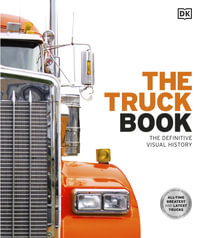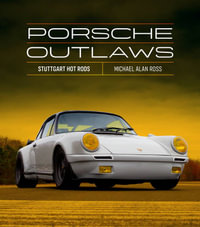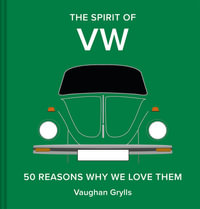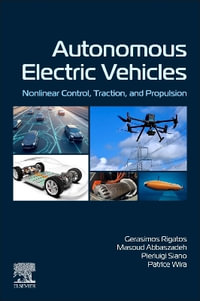| Transportation Systems | |
| Introduction | p. 3 |
| Passenger Transportation Systems | p. 7 |
| Elevators | p. 9 |
| Construction and Operation | p. 10 |
| Safety | p. 10 |
| Modern Technology | p. 10 |
| Control | p. 10 |
| Other Passenger Transportation Equipment | p. 11 |
| Escalators | p. 11 |
| Moving Walkways | p. 13 |
| Horizontal Elevators | p. 13 |
| Cargo Transportation Systems | p. 15 |
| Freight Elevators | p. 15 |
| Conveyors | p. 15 |
| Automated Guided Vehicles | p. 17 |
| Stacker Cranes | p. 18 |
| External Connections and Related Systems | p. 19 |
| External Connections | p. 19 |
| Pedestrian Connections | p. 19 |
| Freight Connections | p. 19 |
| Related Systems | p. 19 |
| Factory Automation | p. 20 |
| Warehouse Automation | p. 20 |
| Hospital Automation | p. 20 |
| Modeling and Simulation | |
| General Modeling Concepts | p. 23 |
| Components and Topology | p. 23 |
| Vehicles | p. 23 |
| Guideways | p. 24 |
| Signal Systems | p. 26 |
| Zones and Banks | p. 28 |
| Nodes and Links | p. 29 |
| Human-machine Interaction and Control Objectives | p. 30 |
| Modeling of the Traffic | p. 30 |
| Human-machine Interface of Elevators | p. 31 |
| Human-machine Interface of Escalators and Other Equipment | p. 32 |
| Control Objectives | p. 32 |
| Queuing Models | p. 33 |
| General Overview of Queuing Models | p. 33 |
| Queuing Models for Elevator Systems | p. 34 |
| The Simplest Case: M/M/1 Model | p. 34 |
| A More General Model: M/G/1 | p. 36 |
| Modeling Techniques for Discrete Event Systems | p. 39 |
| Field Studies | p. 39 |
| Monte-Carlo Modeling | p. 41 |
| Simulation Techniques | p. 41 |
| Modeling by ESM-based Methodology | p. 41 |
| The ESM Framework for Simulations | p. 43 |
| The ESM Model for Discrete Event Simulation | p. 43 |
| Communication Between ESMs | p. 45 |
| Tools for Defining the ESM Model | p. 47 |
| Implementation of the Simulation Program | p. 48 |
| Modeling Cooperating Elevators and AGVs by the ESM Methodology | p. 50 |
| Traffic Survey as the Starting Point for Simulations | p. 51 |
| A Simplified Model of the Traffic in the Building | p. 52 |
| Scheduling Models with Transportation | p. 55 |
| Jobshop Scheduling Problems | p. 55 |
| Classification of Jobshop Scheduling Problems | p. 61 |
| Computational Complexity and Optimization Methods for JSP | p. 62 |
| Robotic Cell Scheduling Problems | p. 64 |
| Intelligent Control Methods for Transportation Systems | |
| Analytical and Heuristic Control of Transportation Systems | p. 69 |
| Evolution of Control Methods | p. 69 |
| Analytical Approaches | p. 70 |
| Heuristic Rules | p. 71 |
| Algorithmic Control | p. 72 |
| Fuzzy AI Group Control | p. 73 |
| Early Approaches to Optimal Control | p. 74 |
| Adaptive Control by Neural Networks and Reinforcement Learning | p. 79 |
| Information Processing by Neural Networks | p. 79 |
| Multilayer Perceptrons | p. 80 |
| Model of the Processing Units | p. 80 |
| Structure and Operation of the Multilayer Perceptron | p. 80 |
| Expressive Power of the MLP | p. 82 |
| Learning as an Optimization Problem | p. 83 |
| Nonlinear Optimization by the Gradient Method | p. 84 |
| Derivation of the Learning Rule | p. 85 |
| Hints for the Implementation and Use of the BP Method | p. 87 |
| Using More Refined Optimization Methods | p. 89 |
| Learning and Generalization by MLPs | p. 91 |
| Learning and Generalization | p. 91 |
| Generalization in the Case of MLPs | p. 91 |
| Testing MLPs | p. 91 |
| Learning by Direct Optimization | p. 92 |
| Forward-Backward Modeling | p. 92 |
| Learning with Powell's Conjugate Direction Method | p. 93 |
| Learning by Genetic Algorithms | p. 93 |
| Reinforcement Learning | p. 94 |
| Markov Decision Processes | p. 94 |
| Dynamic Programming (DP) | p. 96 |
| The Value Iteration Method | p. 97 |
| Q-learning | p. 98 |
| Genetic Algorithms for Control-system Optimization | p. 103 |
| Stochastic Approach to Optimization | p. 103 |
| Genetic Algorithm | p. 104 |
| Combinatorial Optimization with GA | p. 105 |
| Nonlinear Optimization with GA | p. 107 |
| GA as the Evolution of Distributions | p. 108 |
| GA and Estimation of Distributions Algorithms | p. 110 |
| Optimization of Uncertain Fitness Functions by Genetic Algorithms | p. 111 |
| Introduction to GA for Optimization with Uncertainty | p. 111 |
| Optimization of Noisy Fitness Functions | p. 112 |
| Adaptation to Changing Environment | p. 112 |
| Discussion from the Application Side | p. 113 |
| Approach to Uncertain Optimization by GA | p. 114 |
| GA for Optimizing a Fitness Function with Noise | p. 115 |
| GA for Varying Environments | p. 116 |
| MFEGA and an Example of its Application | p. 118 |
| Control System Optimization by ES and PSO | p. 121 |
| Evolution Strategies | p. 121 |
| Framework of Evolution Strategies | p. 121 |
| Algorithm Designs for Evolutionary Algorithms | p. 121 |
| Optimization of Noisy Fitness with Evolution Strategies | p. 128 |
| Ways to Cope with Uncertainty | p. 129 |
| Optimal Computing Budget Allocation | p. 131 |
| Threshold Selection | p. 132 |
| Particle Swarm Optimization | p. 137 |
| Framework of Particle Swarm Optimization | p. 137 |
| PSO and Noisy Optimization Problem | p. 139 |
| Summary | p. 141 |
| Intelligent Control by Combinatorial Optimization | p. 143 |
| Branch-and-Bound Search | p. 143 |
| Tabu Search | p. 145 |
| Definition of the Problem | p. 145 |
| Local Search | p. 145 |
| Basic Structure of Tabu Search | p. 147 |
| Topics in Modern Control for Transportation Systems | |
| The S-ring: a Transportation System Model for Benchmarking | |
| The Kac Ring | p. 151 |
| Definition of the S-ring Model | p. 151 |
| Control of the S-ring | p. 153 |
| Representations of the Policy | p. 156 |
| Policy Examples | p. 156 |
| Extensions | p. 157 |
| A Prototype S-ring | p. 158 |
| Solution by Dynamic Programming | p. 158 |
| Formulation | p. 158 |
| Solution | p. 159 |
| Solution by Numerical Methods | p. 159 |
| Kiefer-Wolfowitz Stochastic Approximation | p. 160 |
| Q-learning and Evolutionary Strategies | p. 160 |
| Results of the Optimization Experiments | p. 161 |
| Conclusions | p. 161 |
| Elevator Group Control by NN and Stochastic Approximation | p. 163 |
| The Elevator Group Control as an Optimal Control Problem | p. 164 |
| Elevator Group Control by Neural Networks | p. 165 |
| State Representation for Elevator Group Control | p. 166 |
| Neurocontroller for Group Control | p. 169 |
| Structure of the Neurocontroller for Elevator Group Control | p. 171 |
| Initial Training of the Neurocontroller | p. 174 |
| Adaptive Optimal Control by the Stochastic Approximation | p. 177 |
| Outline of the Basic Adaptation Process | p. 177 |
| Sensitivity of the Controller Network | p. 179 |
| Simulation Results for Adaptive Optimal Group Control | p. 182 |
| Conclusions | p. 186 |
| Optimal Control by Evolution Strategies and PSO | p. 187 |
| Sequential Parameter Optimization | p. 188 |
| SPO as a Learning Tool | p. 188 |
| Tuning | p. 190 |
| Stochastic Process Models as Extensions of Classical Regression Models | p. 191 |
| Space-filling Designs | p. 195 |
| The S-ring Model as a Test Generator | p. 195 |
| Experimental Results for the S-ring Model | p. 198 |
| Evolution Strategies | p. 198 |
| Particle Swarm Optimization on the S-ring Model | p. 203 |
| Classical Algorithms on the S-ring Model | p. 208 |
| Criteria for Choosing an Optimization Algorithm | p. 209 |
| On Adaptive Cooperation of AGVs and Elevators | p. 211 |
| Introduction | p. 211 |
| Material Handling System for High-rise Buildings | p. 212 |
| Contract Net Protocol | p. 213 |
| Intrabuilding Traffic Simulator | p. 214 |
| Outline of the Simulator | p. 214 |
| Performance Index of Control | p. 214 |
| Cooperation based on Estimated Processing Time | p. 216 |
| Control Using Minimal Processing Time for Bidding | p. 216 |
| Estimation of Processing Time by a Neural Network | p. 216 |
| Numerical Example | p. 217 |
| Optimization of Performance | p. 218 |
| Bidding Function to be Optimized | p. 218 |
| Application of Genetic Algorithm | p. 218 |
| Numerical Example | p. 219 |
| Conclusion | p. 219 |
| Optimal Control of Multicar Elevator Systems by Genetic Algorithms | p. 221 |
| Introduction | p. 221 |
| Multicar Elevator Systems and Controller Optimization | p. 222 |
| Multicar Elevator Systems | p. 222 |
| Controllers for MCE | p. 223 |
| Discrete Event Simulation of MCE | p. 223 |
| Simulation-based Optimization | p. 224 |
| Problems in Optimization | p. 225 |
| Acceleration of Computation | p. 225 |
| Re-examination of Configuration of Simulation | p. 226 |
| A Genetic Algorithm for Noisy Fitness Function | p. 226 |
| Comparison of GAs for Noisy Fitness | p. 227 |
| Setup of Experiments | p. 227 |
| Results of Experiment | p. 228 |
| Examination of Control Strategy | p. 230 |
| Examination of Zone Boundary | p. 230 |
| Effect of Weight Extension | p. 230 |
| Conclusion | p. 232 |
| Analysis and Optimization for Automated Vehicle Routing | p. 235 |
| Introduction | p. 235 |
| Basic Assumptions and Basic Analysis | p. 236 |
| Parallel and Bottleneck-Free PCVRS | p. 236 |
| Interferences and Steady State | p. 237 |
| One Lap Behind Interference | p. 239 |
| Throughput and Mean Interference Time | p. 240 |
| Two Basic Vehicle Routings | p. 241 |
| Random Rule | p. 242 |
| Order Rule | p. 242 |
| Optimal Vehicle Rules | p. 244 |
| Exchange-Order Rule | p. 244 |
| Dynamic Order Rule | p. 247 |
| Numerical Simulation | p. 247 |
| Concluding Remarks | p. 249 |
| Tabu-based Optimization for Input/Output Scheduling | p. 251 |
| Introduction | p. 251 |
| Optimal Input/Output Scheduling Problem | p. 251 |
| Computational Complexity | p. 252 |
| Approximation Algorithm | p. 253 |
| Numerical Experiment | p. 255 |
| Concluding Remarks | p. 255 |
| Program Listings | p. 257 |
| References | p. 261 |
| Index | p. 275 |
| Table of Contents provided by Publisher. All Rights Reserved. |

























